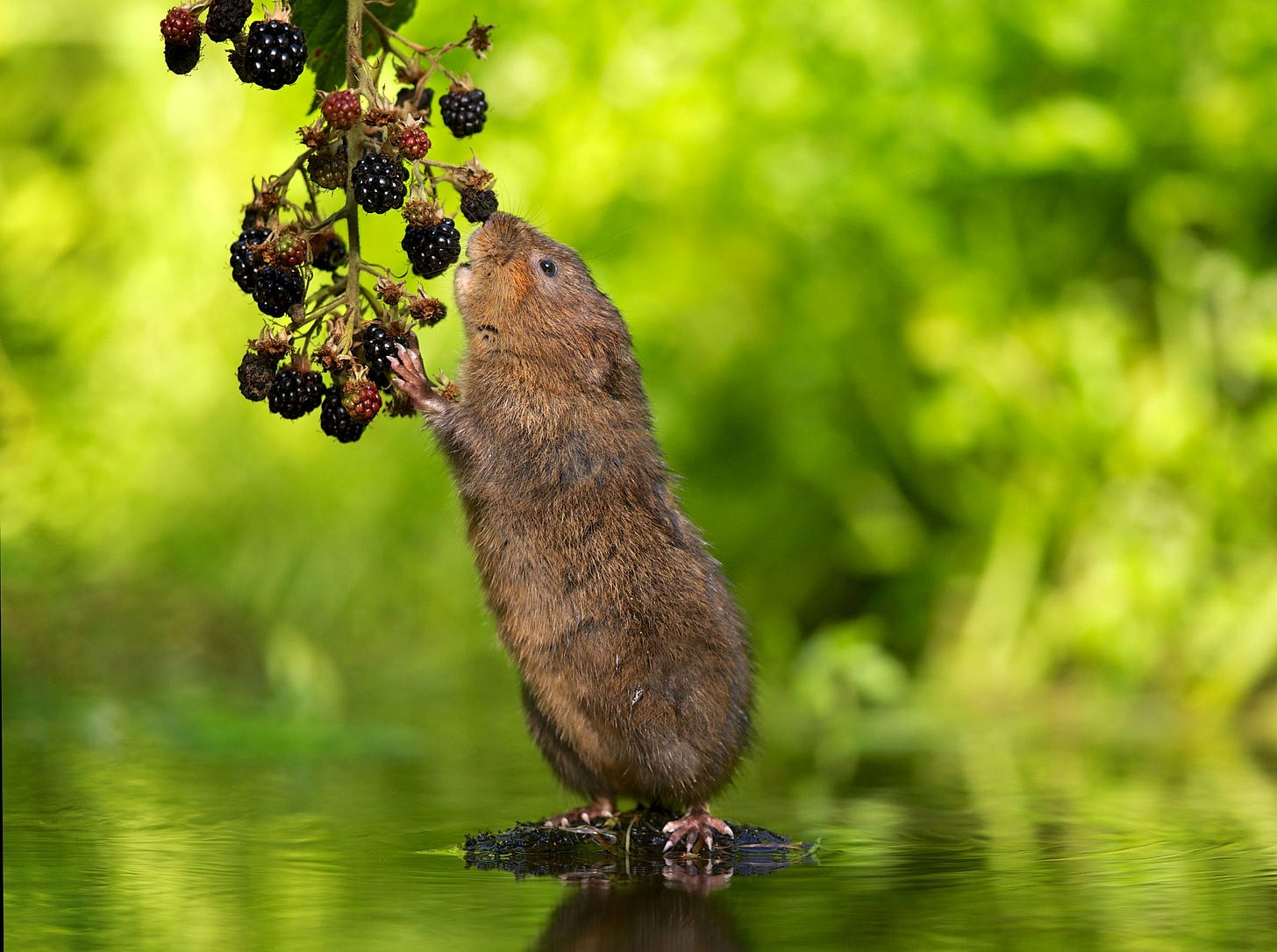Endangered Water Voles Reintroduced at LettsSafari Parks
The Reintroduction of water Voles at LettsSafari parks is bearing fruit. Kenneth Grahame would be proud.
The reintroduction of water voles in Britain has become a critical part of the country's rewilding efforts, aiming to restore ecosystems that have been significantly damaged over time. Water voles, often referred to as "Ratty" from Kenneth Grahame’s The Wind in the Willows, were once widespread across Britain.
However, their population has drastically declined over the past century due to habitat loss, pollution, and predation by non-native American mink.
A project to reintroduce water voles a few years ago, at LettsSafari parks , even including Exeter's Capability Brown gardens, has been quite a success. As a result we have worked on continuing to extend our wetland areas to widen their habitat. Now our central bog and wetland areas cover over 5 acres.
According to reports, water vole populations have declined by over 90% since the 1970s, making them one of Britain's most endangered mammals.
Water voles are an important keystone species in wetland ecosystems. They create complex burrow systems and eat large amounts of aquatic plants, which helps to manage wetland vegetation. This behaviour contributes to healthier waterways by maintaining plant diversity and reducing overgrowth, which in turn supports a broader range of wildlife.
A lesser-known fact about water voles is their fascinating ability to engineer their habitat by creating "rafts" out of floating vegetation. These rafts are used by water voles not only for feeding but also as vantage points to avoid predators. Water voles are highly skilled swimmers and will construct these floating platforms by intertwining plant material such as reeds and grasses. This behaviour demonstrates their adaptability and resourcefulness in navigating their watery environments.
Keep reading with a 7-day free trial
Subscribe to LettsSafari+ to keep reading this post and get 7 days of free access to the full post archives.




